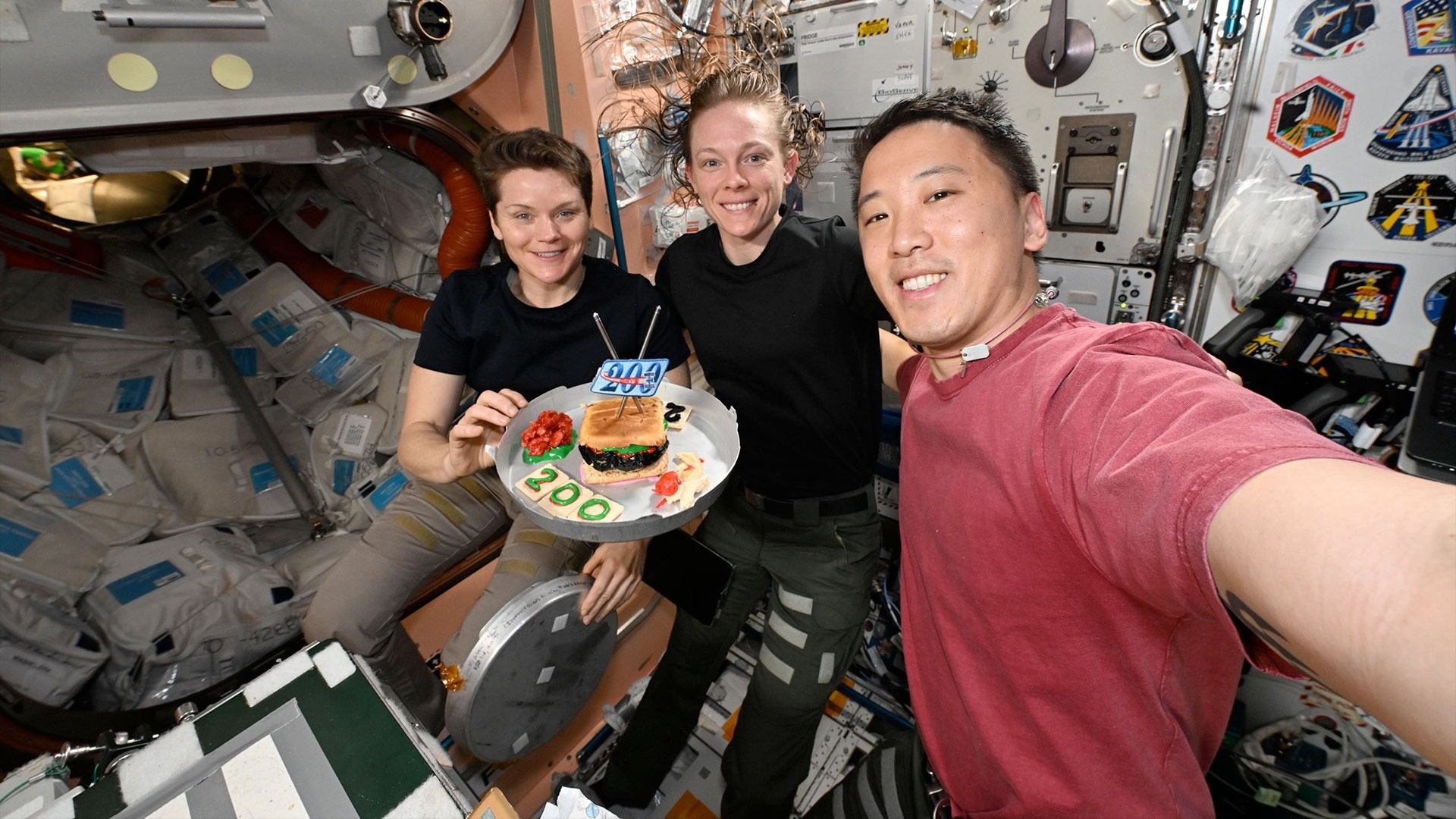Here's how to watch SpaceX launch 60 new Starlink satellites into orbit today
Update for 11 a.m. EST: SpaceX has successfully launched its fifth batch of Starlink satellites, but missed its Falcon 9 rocket landing. Read the full story here.
Original story
The private spaceflight company SpaceX will launch 60 new Starlink internet satellites to join its growing megaconstellation in orbit today (Feb .17) and you can watch the action live online.
A SpaceX Falcon 9 rocket will launch the fifth batch of Starlink satellites into orbit from the company's pad at Space Launch Complex 40 of the Cape Canaveral Air Force Station in Florida. Liftoff is set for 10:05 a.m. EST (1505 GMT).
You can watch the Starlink launch live here and on Space.com's webcast page, courtesy of SpaceX, beginning at about 9:50 a.m. EST (1450 GMT). You can also watch the launch directly from SpaceX here.
Video: See SpaceX's 1st Starlink satellites in the night sky
SpaceX's Starlink project is a large-scale space operation to provide global access to high-speed internet using a megaconstellation of satellites in low Earth orbit. The company envisions an initial fleet of 12,000 satellites, but could offer minimal service with 240 satellites and offer moderate coverage with 800 satellites, SpaceX CEO Elon Musk has said.
Breaking space news, the latest updates on rocket launches, skywatching events and more!
To date, SpaceX has launched four batches of 60 Starlink satellites into orbit since mid-2019 (two of those flights in January of this year) for a total of 240 satellites, so far. Today's launch will boost that number up to 300 satellites.
Some astronomers have expressed concern over the impact SpaceX's Starlink megaconstellation (as well as others planned by OneWeb and Amazon) will have on astronomy. SpaceX is responding to those concerns by studying ways to lower the reflectivity of its Starlink satellites.
SpaceX aimed to launch this Starlink-4 mission last week, but bad weather offshore was unfavorable for the planned landing of the mission's Falcon 9 rocket first stage. SpaceX plans to land the Falcon 9 booster - which has flown three times before - on the drone ship Of Course I Still Love stationed in the Atlantic Ocean. The two-stage Falcon 9 launched two commercial Dragon resupply missions (CRS-17 in May 2019 and CRS-18 that July) and the telecommunications satellite JCSAT-18/Kacific1 in December.
The Falcon 9's touchdown at sea will mark SpaceX's 50th rocket landing since the company began recovering boosters in December 2015.
SpaceX also aims to recover the two halves of the Falcon 9's clamshell-like payload fairings (the rocket's nosecone) after today's launch by catching them in giant nets carried on two recovery boats: the GO Ms. Tree and the GO Ms. Chief. Each of the fairings has its own parachute, allowing the rocket part to drift down to the Atlantic, where the boats will try to catch them.
Musk has said each Falcon 9 payload fairing costs about $6 million, so reusing them could represent a big savings for the company.
- In Photos: SpaceX Launches Third Batch of 60 Starlink Satellites to Orbit
- SpaceX's Starlink Broadband Service Will Begin in 2020: Report
- Why SpaceX's Starlink satellites caught astronomers off guard
Email Tariq Malik at tmalik@space.com or follow him @tariqjmalik. Follow us @Spacedotcom, Facebook and Instagram.
OFFER: Save at least 56% with our latest magazine deal!
All About Space magazine takes you on an awe-inspiring journey through our solar system and beyond, from the amazing technology and spacecraft that enables humanity to venture into orbit, to the complexities of space science.
Join our Space Forums to keep talking space on the latest missions, night sky and more! And if you have a news tip, correction or comment, let us know at: community@space.com.

Tariq is the award-winning Editor-in-Chief of Space.com and joined the team in 2001. He covers human spaceflight, as well as skywatching and entertainment. He became Space.com's Editor-in-Chief in 2019. Before joining Space.com, Tariq was a staff reporter for The Los Angeles Times covering education and city beats in La Habra, Fullerton and Huntington Beach. He's a recipient of the 2022 Harry Kolcum Award for excellence in space reporting and the 2025 Space Pioneer Award from the National Space Society. He is an Eagle Scout and Space Camp alum with journalism degrees from the USC and NYU. You can find Tariq at Space.com and as the co-host to the This Week In Space podcast on the TWiT network. To see his latest project, you can follow Tariq on Twitter @tariqjmalik.

